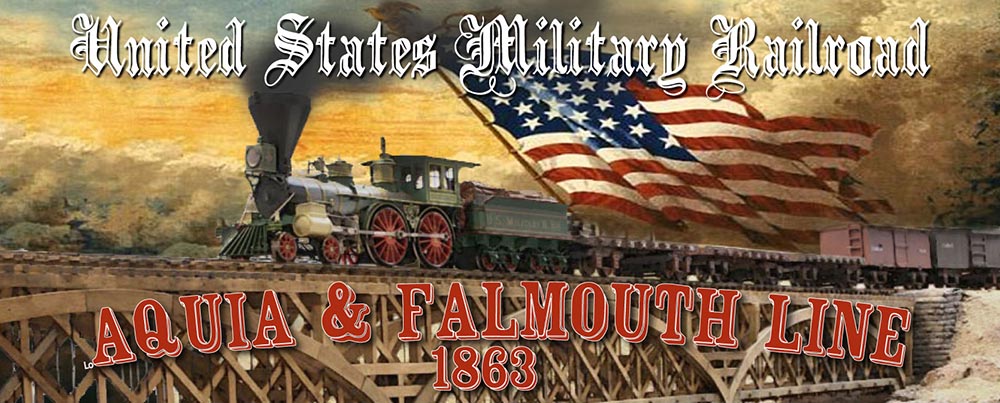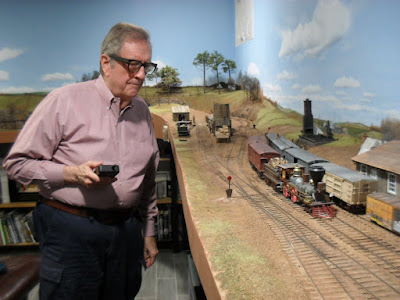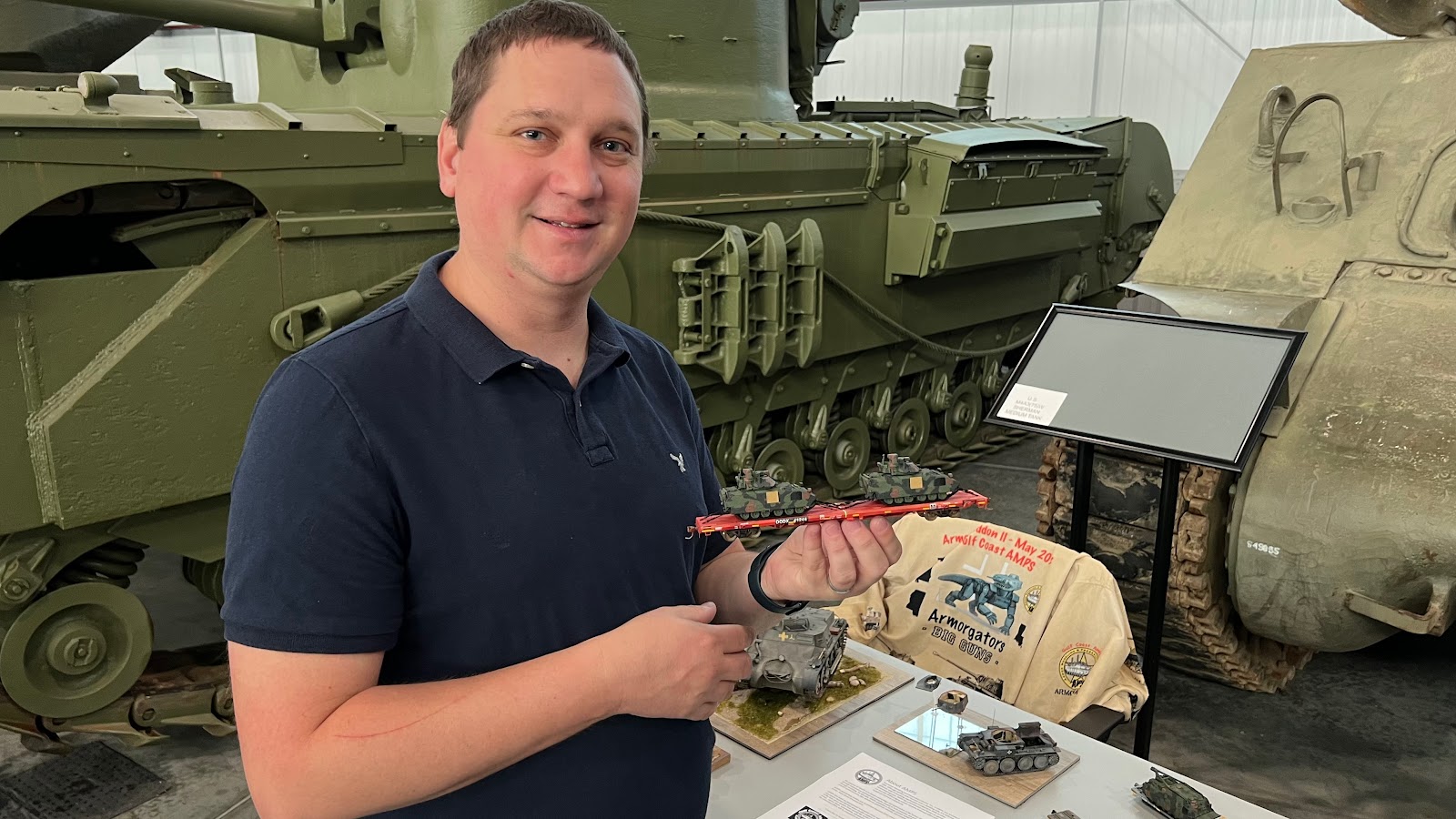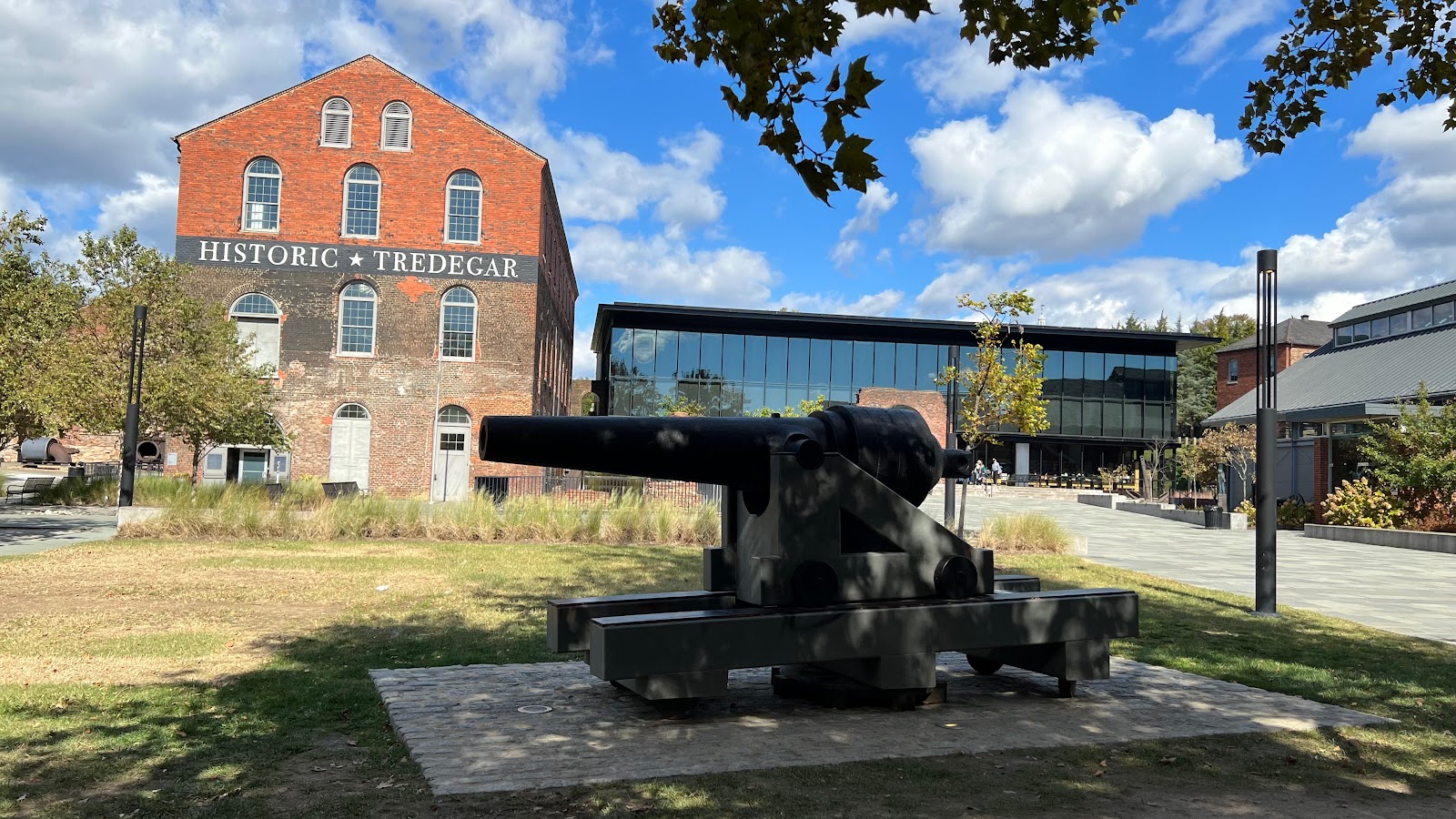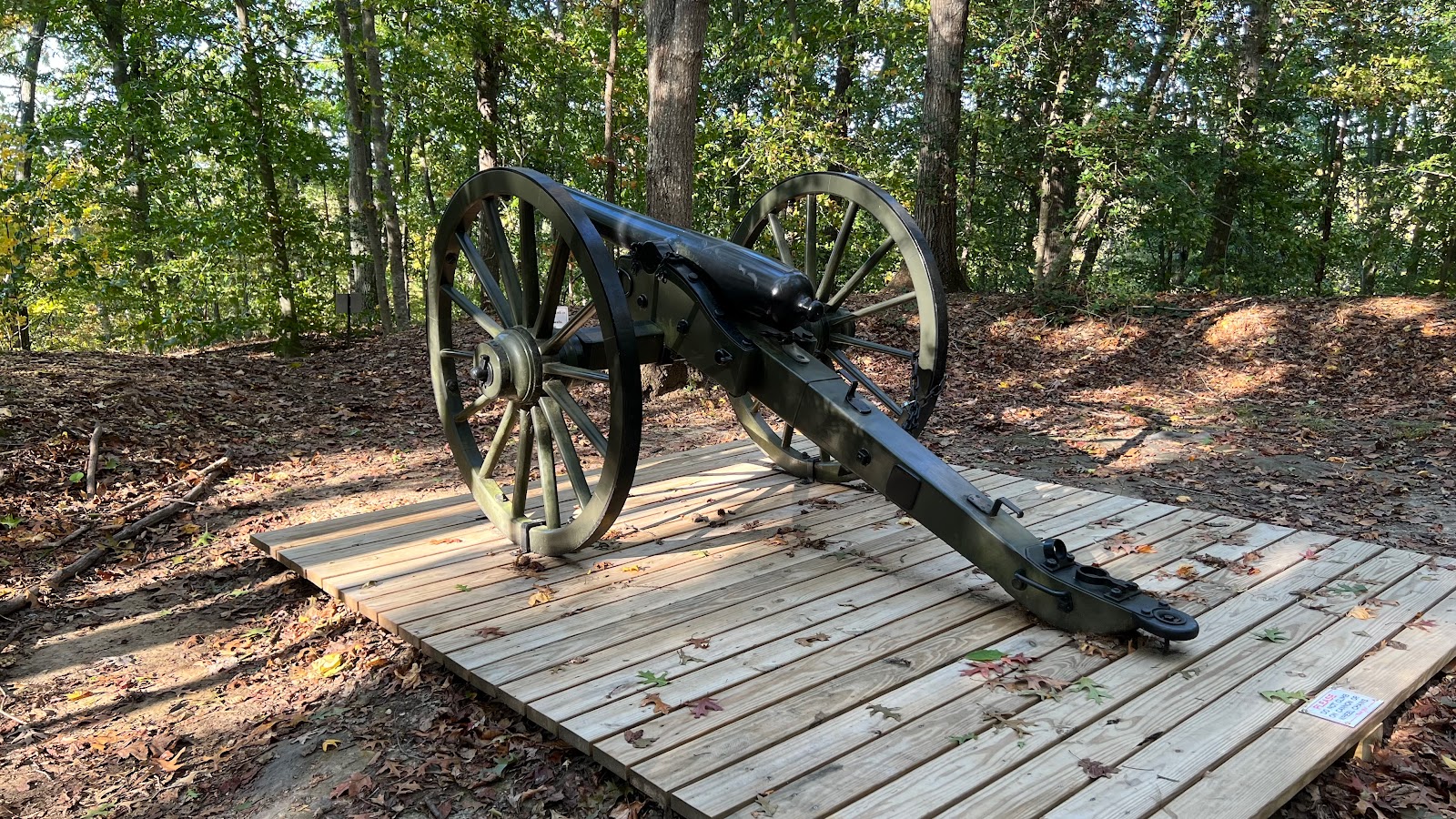December 30, 2023
Some new scenery underway
I finally had a chance to start to work on the scenery by the new trestle. The area behind the bridge will be largely forested.
December 17, 2023
December 15, 2023
Shadow Box Diorama, "What Have We Done?"
I am just about done with this small shadow box diorama. It features a figure from Scale75, called "The Casualty Toll." I bought the figure as I thought the pose was very compelling. Later I learned the figure was based on an original painting by Keith Rocco entitled, "Lt. Col. Williamson, 6th Virginia."
The colors in the box art were quite blue, almost teal in coloration. Keith's artwork in more neutral gray. So I used Keith's colors as a guide.
 |
| Overall box diorama |
I built a small shadow box to display the figure. The scene is nighttime. Lt.Col. Williamson reviews the casualty list from the day's battle. The box is 6 inches wide, 7 inches tall and 4 inches deep. I added a black acrylic front, but I think I will change that as it is very hard to keep clean. It shows every fingerprint and it is reflective. I am thinking perhaps a veneer of dark walnut instead.
I added a battery powered puck light with LEDs that can change colors to the top of the diorama to provide the moonlight. To reduce the intensity of the moonlight, I sprayed the diffuser of the puck light with a few coats of Tamiya clear blue paint. The puck also has a remote to control the colors.
The campfire started as a tea candle. I took it apart and powered the LED that came with it with a 9V battery. I used a 22ohm resistor in series with the LED as I wanted the light to be brighter than it was with just the small 1.5 volt disk battery it comes with. I experimented with different resistors to find one that worked.
 |
| Before adding additional tongues of flame |
I used the cover of the tea candle that is shaped like a candle flame. I added additional tongues of flame to that using hot glue. I painted the flame with orange, red, and sienna inks. There is no smoke on the diorama - I added that with photoshop.
I found some twigs in my yard to use for the firewood. I cut them into appropriately sized pieces. I used my soldering iron to scorch the logs. My shop seemed like burnt firewood, so appropriate.
The intensity of the flame was reduced when I painted the flame with the ink. So, I sprayed some orange ink on the scenery to enhance the light from the fire and make it blend better with the backdrop. I also sprayed the grass in the backdrop with sienna and dark gray to reduce its saturation to look more like moonlight.
I used the tree stump that comes with the figure. I added ground cover of dried leaves, some static grass and vegetation from Silfor obtained via Scenic Express.
The backdrop is a simple photo composite.
It is very difficult to photograph this diorama due to the colored lighting and spill light from the room. I shot the lead photo is a dark room. The sky in the backdrop looks much more luminescent when viewed in person. The camera can't capture that glow. The acrylic front causes reflections that are distracting in photos.
I haven't come up with a final title yet. I like, "What have we done." But I'm still thinking about it. Suggestions for title are welcome.
`
December 13, 2023
A New Project Opportunity
I had the pleasure of hosting Keith Rocco and Mark Fastoso today for a visit to the Aquia Line and a discussion about a new project.
Keith is a very well known artist that specializes in military history. He has produced hundreds of paintings of many subjects especially the American Civil War and Napoleonic War that are available as limited edition prints. Many of those prints are also available in compilation books. He also has completed several spectacular murals including some at the The National Museum of the Civil War Soldier, Petersburg, VA. His latest murals are at the First Division Museum, Wheaton, IL. Several of the dioramas I have built have been inspired by Keith's work.
Mark is an Emmy award-winning documentary executive producer at Alabama Public Television. He also designs wargames and hosts the Youtube channel, Mark's Game Room. That is a Youtube channel devoted to wargaming and military history. It is know for extremely high production values and detailed historical analysis presented in a fun and engaging way.
We started the visit with a tour of the Aquia Line. Keith is not a model railroader, but is very knowledgable in the history. I think he enjoyed seeing the layout. I was extremely flattered when he said he liked my backdrops.
 |
| We are using some of my 15mm terrain and figures to get a feel for the scope of the project. |
After bashing around some ideas we decided we would build several portable diorama sections in 1/100 (or 15mm) scale. The exact details are still in the design phase, but I am excited to participate in this joint project. My job will be the bases, terrain, and structures, Mark's group will provide the figures and vehicles. Keith will do the design and paint the backdrops. It will be fun to see this develop.
December 12, 2023
Some new photos of the layout
I spent the past few days shooting pictures of the layout for an upcoming article. Even though the Aquia Landing area isn't done, this picture captures the look and feel I am going for. It just needs more of everything.
I used PS Generative AI to extend the water into the aisles in the photo.
December 3, 2023
Sharing the Word on Civil War Railroad Modeling
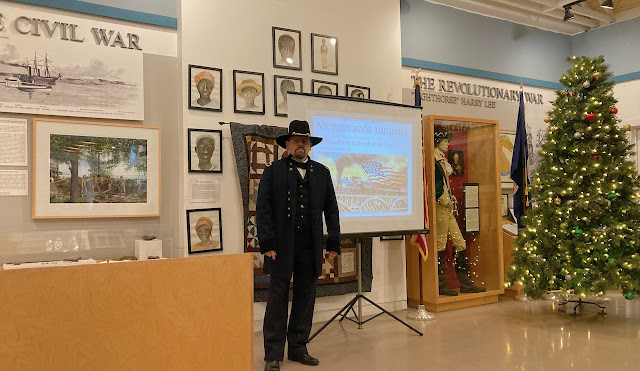 |
| I donned my ACW Generals uniform to present my talk at Leesyylvania State Park |
It was a busy week for sharing the word of Civil War era model railroading.
It started last week when my son and his family were in town for the holidays and a conference. On two evenings we ran trains for the entertainment of my granddaughter, Ruka, and her parents. She seemed to be fascinated with the trains despite just turning one year old on Monday.
The visitors continued on Friday when Jack Brown, his wife and their friend John Carroll visited the Aquia Line as part of a weekend trip to the Washington, DC area. It was Jack and John's second visit but the first for his wife. We had a nice visit.
On Saturday morning I presented a talk on Railroads of the Civil War to a group of 15 people at the Leesylvania State Park visitor center. The visitor center has a nice museum with lots of information about the history of the land that comprises the park. It was a pleasant surprise as I did not know that there was a museum there.
I learned from their exhibits that the Union gunboat Jacob Bell was involved in a small skirmish at Freestone Point. It remained in the Potomac River for much of the war. It would be a good candidate for a model of one of the gunboats that protected Aquia Landing. It was about 141 feet long, so not too big. Perhaps I will replace the Passaic with the Jacob Bell.Thanks to Bill Mosteller and John Steitz who ran the trains during the open house.
Alicia made cookies, which appeared to be a bit hit as none were left at the end of the day. Bill also brought some cookies.
November 16, 2023
Upcoming Events
I am scheduled to present a talk on Railroads of the Civil War at the Leesylvania State Park on 2 December at 1000AM. This talk is aimed at the general public and will cover a variety of topics related to the development and operation of railroads during the Civil War. The talk will conclude with a selection of photos from my model railroad. Please see the link above for details. There is a parking fee for each vehicle, but the talk is free. I hope to see you there.
Leesylvania Park is the site of the former Confederate Freestone Point Battery. Established in 1861, the Freestone Point Confederate Battery was part of the five month Confederate blockade of the Potomac River. Union ships shelled the battery several times with little effect on each. When Union soldiers made it to shore during the Battle of Cockpit Point in 1862, the batteries were abandoned. The earthworks survive to today as part of the Leesylvania State Park and were added to the National Register of Historic Places in 1989.
On December 3, I will be hosting an open house to give folks a chance to visit my model railroad. The time will be from 1-4PM. If you read this blog, you are welcome to attained. RSVP to let me know if you are planning to come.
November 15, 2023
Great Lakes Getaway 2024
I attended Great Lakes Getaway 2024 last weekend. I and 21 other out-of-town guests had the chance to operate on up to 5 great layouts in the greater Detroit area. On the first day I operated at Doug Tagsold’s C&S Layout today. It is a spectacularly beautiful model railroad. It is also one of the more complicated Timetable and Train Order layouts that I have run. There is lots to think about as you chug along or wait for meets. I ran an extra ore train that was basically swimming upstream against several scheduled trains. The long runs between control points combined with the slow speeds are unmatched in any model railroad that I am aware. Definitely one of my favorite railroads to operate and visit.
The day capped off with a fun group dinner. The food and company was great but the dang musician was so loud, my ears started ringing.
On the second day I operated on Mike Burgett’s beyond museum quality C&O layout. I am proud to have contributed to it with some structures and signals via Alkem Scale Models.
I did my favorite job, West Clifton Forge Yard. That job builds trains and weighs coal hoppers. It all happens from one seated position which I do like. It really feels like a real railroad when you operate at Mike's. This railroad with its dispatcher office and tower has to rank as one of the best in the country.
That night I presented an after dinner talk to the group on an update on the Aquia Line. Travers Stavac also presented his plans for his new layout that incorporates some of Paul Dolkos's former layout.
Last layout for my trip was Bill Neale’s wonderful PRR Panhandle division. This was my second visit to Bill’s layout. This time I ran a through oil train, and a coal shifter. The pièce de résistance was being engine crew on a massive 45 coal hopper train with three crewmen each running a PRR decapod- 2 on the head and one snapper (aka pusher) on the rear. As an extra treat, Bill’s wife, Terry , provided a tour of their birdfeeders in the back yard and pointed out some of the birds we saw.
November 5, 2023
Joint Potomac and James River Division Meet and other travels
 |
| My dioramas, which feature Sherman tank models, on display next to actual Sherman tanks |
I attended the joint Potomac and James River Division Meet last Saturday, 4 Nov 2023. That meet culimated a busy period of hobby related travel.
 |
| Charlie's Layout is the top floor of a large 3 car garage. |
To briefly recap, I drove to Memphis, TN via Lexington, KY (where I visited Chase, Muzuki and Ruka) to attend the ACWRRHS annual meet from 12-15 October. The highlight of the meet was to be two op sessions on Charlie Taylor's Memphis and Charleston Model RR. We got to run trains one day. Then Charlie and his wife contracted COVID (fortunately not serious cases). So we had to resort to alternate plans. Those included a joint build of TTRAK models in the hotel, and I did a presentation on the latest news on my layout.While in Memphis, we ate BBQ, spent an evening on Beale Street listening to music, and squeezed in some rail fanning. I also visited the massive Bass Pro Shop in the pyramid.
On Sunday I drove to Birmingham, AL. I picked up Alicia at Birmingham airport. We then spent the week with Danica, Adam and Merritt. Alicia returned home on Tuesday for a doc appt. So I had to baby sit Merritt by myself for a couple days. It was tons of fun.
On Friday I drove to Fort Moore in Columbus, GA to meet my brother, Rob, to attend an armor model contest and open house at the US Army Armor and Cavalry Museum. I was there earlier in the year, but it was great to revisit with more time to look around. We brought some models to display.
We also managed to get in a round of golf at Maple Ridge GC. I actually played pretty well for a change.
The show was fun. We didn't get any awards, but we did get to get close up looks at the vast collection of armor they have on display.One other unexpected highlight was that I got to meet some customers of my Alkem Scale Models DODX flat cars. David Perkins even had some on display. He really lobbied me to continue to produce those and other DODX cars.
On the drive home I made three stops in Virginia.
 |
The National Park Service has preserved the site and has a recreation of one of the heavy guns that defended the fort. Other than the dirt mounds left by the entrenchments, not much else survived. The bluff is very steep. It is obvious that this was a strong position, at least from river attack.
Next stop was at Tredegar Iron Works in Richmond. The state and the NPS have opened a new museum there. Some of the original brick buildings are still present. The iron works underwent significant expansion after the civil war, so it is difficult to envision how it looked at the time of the war. But, the NPS have two dioramas of the works. One depicts the appearance during the civil war and the other about 50 years later. I did get an answer to a question that had been nagging me for some time - there was no rail spur directly to the works during the civil war. Wagons and canal boats were the primary means of transport to and from the works.
The museum was pretty good too. Not as extensive as the Pamplin Museum of the Civil War, but with several interesting exhibits. Some highlights to me were the uniforms of several notable rebels both male and female, Jeb Stuart's boots, and a period field desk. There was also an interesting exhibit on the rise of paper money as a result of the civil war.
Last stop was a visit to the Stafford Civil War Park. This park sits is situated on 41 acres that hosted the Union Army's 11th Corps, 1st and 3rd Divisions, following the December 1862 Battle of Fredericksburg. You walk or drive to 8 different stops to view the remains of several union army camps and entrenchments. The sites are well marked with signs and replica guns and shebangs (temporary huts built by soldiers for housing). Like Drewry's Bluff, I was impressed with the roughness of the terrain, The entrenchments would have been very difficult to assault.
I had two weeks at home to recover from the trip. That included surprise laser surgery to repair a small hole in my left retina. I was not having symptoms from the issue, but my ophthalmologist noticed it during my regular eye exam. It pays to get your check ups. My vision is back to normal.
 |
| Sean's layout building - Wow! |
This gets us to the Joint division NMRA meet. I got there a bit late so was only able to attend one clinic. Mark Gionet described how he scratch built a lattice truss step bridge. Then it was off to lunch and some layout tours. I visited Sean Hoyden's massive NS layout under construction in a separate outbuilding.
October 8, 2023
A Haunted Train? Op Session 26
It might still be about 3 weeks until Halloween but some crazy gremlins haunted the layout today.
It had been about 6 months since the last session. Some of the track was shockingly oxidized and dirty. It took me about an hour to clean up the track and wheels. But all was ready when the operators arrived.
Previous operators Len White, John Steitz, Ben Sullivan and Kelly Regan joined two first timers, Phil Taylor and Bill Mosteller. They got right to work.
We organized into two 3-man crews. John, Kelly and Bill made up one crew, while Ben, Phil and Len made up the second crew, which events would show to be the jinxed crew.The first crew ran pretty well except that engine Haupt had some issues about half way through. So I swapped it out with McCallum.
Meanwhile crew two with Engine Fury proceeded well until the first gremlin struck. One of the axles on car 1445 fell out of its truck while switching Aquia Landing. This truck is an arch bar truck that I scratch built. A glue joint between the side frame and bolster failed allowing the side frame to flex and wheel to fall out. It was a simple fix to re-glue the failed joint. This failure never happened before.
Later as that train arrived in Falmouth the draw bar between Fury's tender and engine fell off. This was also an easy fix. It seems that the screw that holds the draw bar had loosened. This also never happened before but again was an easy fix,
Finally, as crew 2 were wrapping up their run for the day, their train stalled in the Clozet tunnel. It was very perplexing as the engine was responding to throttle and seemed normal. It turns out that there was another locomotive in the tunnel. Somehow Engine Whiton was inadvertently energized and left the engine shed. It derailed as it passed the turnout to the engine shed, but continued riding the ties until it entered the tunnel and collided with the other train. I don't think anything like this has happened before. Was it a Halloween ghost train or a rebel attempt to highjack the railroad?
Other than that, it was a fun session.
.
National Capitol Model Soldier Society Annual Show 2023
 |
| The show had an official photographer to shoot pictures of every entry. |
I was busy as a judge during much of the event, so I didn't get too much time to look at the awesome models. I did take a few photos. These models below received gold medals. I was happy to report that all three of my entires also received gold medals. The High Rome to Rome also received the special award for Victory in Europe.
 |
| Gold medal winning bust by Brian Howard |
September 18, 2023
MARPM 2023 Wrap Up
 |
| Scott Wahl's new N Scale TTRAK model depicting Vienna, VA. It was enhanced with nice lighting effects. |
Last weekend I attended the MARPM 2023. I am the director of the event so I was very busy during the meet. I was ably assisted by Robert Sprague, Mike Pulaski and Doug Chapman. The event was very successful. We had about 114 people at the meet. There were 24 clinics from some top notch presenters, as well as 3 hands-on clinics that ran nearly all weekend.
 |
| Plate C was one of the Vendors at the meet. |
There were 4 vendors present selling a nice selection of models, books and parts.
 |
| Martin conducting his scratch building demo |
We held the meet in conjunction with Main Line Hobby Supply Open House Weekend. Thus, there were 44 layouts open for visiting over the 4-day event.
 |
| Tore visiting my railroad on Sunday |
Jim Dufour created a nice photo gallery on Flickr showing some of the models on display.
There will be a MARPM24. As you may have heard, our venue in Hunt Valley is closing permanently in October, so we will be searching for a new location and also considering other revamps to our program.
We realize that this year's dates conflicted with many other model and non-model railroad activities, but they were the only open times at our hotel. Furthermore, September-October is a very busy time with events virtually every weekend. If you have suggestions for times or locations please submit them via the comment below or on our Facebook group.
August 16, 2023
Artist Preservation Group Exhibition at Gettysburg, PA 18-20 August
The Artist Preservation Group will be conducting an American Civil War themed miniature art exhibition in conjunction with with the National Parks Service and the Gettysburg Foundation at the Gettysburg Visitor Center on 18 through 20 August. I believe there will be over 60 artists exhibiting work. Most will be military miniatures, but I plan to bring some civil war era model trains and ships along with some dioramas too.
The event actually kicks off on Thursday with a figure painting class, but that is already sold out. The exhibit will be open to the public on Saturday and Sunday as long as the visitor's center is open. Sunday morning there will be a guided terrain walk retracing the steps of Pickett's Charge.
The Artist Preservation Group is a gathering of like-minded historical artists whose mission is to generate capital through fundraising and donations in order to aide in the preservation and restoration of threatened historical sites and/or artifacts. They are committed to using artistic talents to actively support historical sites as they continue their dedication to the preservation, restoration, and interpretation of events that shaped history. For more information about APG see, https://artistpreservationgroup.com/
August 10, 2023
IPMS National Convention 2023
We just finished a whirlwind trip across America’s swamp land to the hill country of Texas. The main purpose of the trip was to attend the IPMS USA National Convention in San Marcos, TX. But we did a lot more that just drive through swamps and desert to get there. Highlights of the road trip included a tour of the Tabasco factory in Avery Island, witnessing 2 forest fires, seeing two model railroads in Houston, visiting the Texas Military Museum in Austin, seeing the battleship Alabama in Mobile, AL, and the US Naval Aviation Museum, Pensacola, FL. I went birdwatching most mornings and saw 22 lifers. We met two college friends.
The trip began with me riding AMTRAK Autotrain to Florida. I brought my car loaded with models and dioramas to exhibit at the meet. Those included the "High Road to Rome" diorama that my brother and I jointly built, the "Oracle at Delphi" box diorama (actually a vignette in IPMS rules), "Backdoor to the City of Charlemagne" a 1/56th scale vignette I built last year, and my SS Atlantic Tugboat and Railroad barge with 4 cars. The latter came straight off my Aquia Line layout. I built some carrying cases for them as I also plan to bring them to the APG Exhibition in Gettysburg in a few weeks.
Once in Florida I stopped at the Orlando Wetlands park to do some bird photography. I stayed at my brother Rob's house in Melbourne. I did a bit more birdwatching on Sunday at Sebastien Inlet.
 |
| Staging the models we would bring |
Rob had some models he planned to exhibit, so we packed those too. We headed out early Monday morning and linked up with Dan Pierce in Orlando. He was driving his own vehicle as he planned to bring back a lot of model kits to resell in his business. So we had three drivers for two vehicles. That worked pretty well as no one got too fatigued over the 2,500 mile road trip.
Our first night was spent in Lafayette, LA. Of course we ate Cajun food that evening.
Next morning Dan had to drop his truck off at a mechanic's shop for some repairs. So we spent the morning rail fanning, birding Spanish Lake, and visiting the Tabasco Factory on Avery Island. The Tabasco factory was very interesting. It still retains the charm of an old style factory despite getting peppers from around the world and shipping hot sauce in return after 3 years of fermenting. |
| Dan, Al Partlow and Rob |
That afternoon we arrived in Houston, TX and toured Al Partlow's and Mike Spoor's model railroads. We then visited Rob's fraternity brother, Spotswood, and his wife, Susan. They live south of Houston and have a large spread with a horse and donkey. We spent the night with them.
 |
| Sunrise on the Blanco River at the house we rented |
On Wednesday we drove to San Marcos, but now our convoy had 3 vehicles as Spotswood drove too. He is a retired chemical engineer who is starting to build air plane models that he has been collecting for much of his adult life. We arrived at the convention and set up our models in the exhibit area. Then we drove to Wimberley Texas, about 20 miles west in the hill country where we had rented a beautiful house on the Blanco River. One other modeler joined us, Will Findley from Lakeland, Fl. So we had 5 modelers staying in the house. The house was beautifully equipped and decorated. It reminded of something Joanna and Chip Gaines from the TV show Fixer Upper might have done. Wimberley is a charming small town with many shops, restaurants, parks, and a Rock Island caboose on display.
The convention was huge. Around a 1,000 modelers attended. There were over 3,100 models on display in 7 major categories. Those were divided into smaller sub-categories. Aircraft dominated with 53 sub-categories, followed by 38 Military Vehicle, 16 Figure, 18 Ship, 22 Automotive, 10 Space/Sci-Fi, and 12 Miscellaneous. Almost all of these models are judged and awards for 1-2-3 are declared in each subcategory. That is a lot of awards to process, but they seem to have the system down pat. If you want to see photos of almost all the models at the meet click on this link.
The vendor area was big, encompassing three rooms. But it was not as big as a typical National Train Show that usually accompanies the NMRA National Convention. Despite being smaller, it seemed like it was much busier in terms of sales. I saw lots and lots of people buying model kits, tools and books. I purchased only one model kit and a single bottle of Vallejo paint. But, my 5 house mates fully joined in the frenzy. Our vehicles were packed to the brim with model kits on the trip home.
IPMS members have what they call, "stashes." Those are piles of model kits they buy and accumulate. Model railroaders with hundreds of unbuilt kits will immediately identify with the concept, though I don't think model railroaders call them stashes. Many or most of the kits in the typical stash will never get built. Many eventually get recycled in estate sales and flea markets. But some do get built as evidenced by the 3,100 models on display.
The IPMS USA National is a bit different than the NMRA National Conventions. The IPMS is focused on the model display and especially the contest. They do offer some seminars and clinics, but just a handful. They also offered a couple organized tours to local attractions. Compare that to a typical NMRA Convention where there are nearly 100 clinics and dozens of tours, while the contest is much smaller. If 100 models show up at a NMRA contest that is a lot.
Friday afternoon we visited the Military Museum of Texas at Camp Mabry in Austin. It was an excellent museum focused on the military history of Texas. We returned to the convention as we all we involved in judging.
We are happy to report that we won some awards, despite the competition from many excellent models. The diorama Rob and I built jointly received a second place in group build category. I received third place awards for my Aachen vignette and for my tugboat and railroad barge. My Oracle at Delphi diorama received an informal award from the Huntsville Plastic Modelers Society. Finescale Modeler Magazine featured Rob’s Model T in their convention web gallery. We were joined for dinner by my fraternity brother Winslow Cuthbert and his wife Cathy on Saturday. While we were visiting, there was a forest fire just north of the house we are renting. Our dessert was interrupted as we watched Texas CL-415 Water bombers fly over to fight the fire. The home owners texted us and told us that we might have to evacuate. So we packed up just in case, but the firefighters got the fire under control and we did not have to leave early.
On Sunday we headed back. We stopped in Mobile, AL to see the Battleship Alabama and look at some of the other items they had on display. We arrived after the museum closed, but we still had a chance to look around the park. Then we had a delicious seafood dinner at a local restaurant that had fresh fish.
We spent the night in Pensacola, FL. The next morning we visited the Naval Aviation Museum on the Pensacola Naval Air Station. It is a fantastic museum. It has been expanded into two buildings. There is also a restoration workshop that did not have time to visit.
I made it back to Virginia on Thursday again via Autotrain. It was a great trip. We are energized to work on another group build. More on that later.
